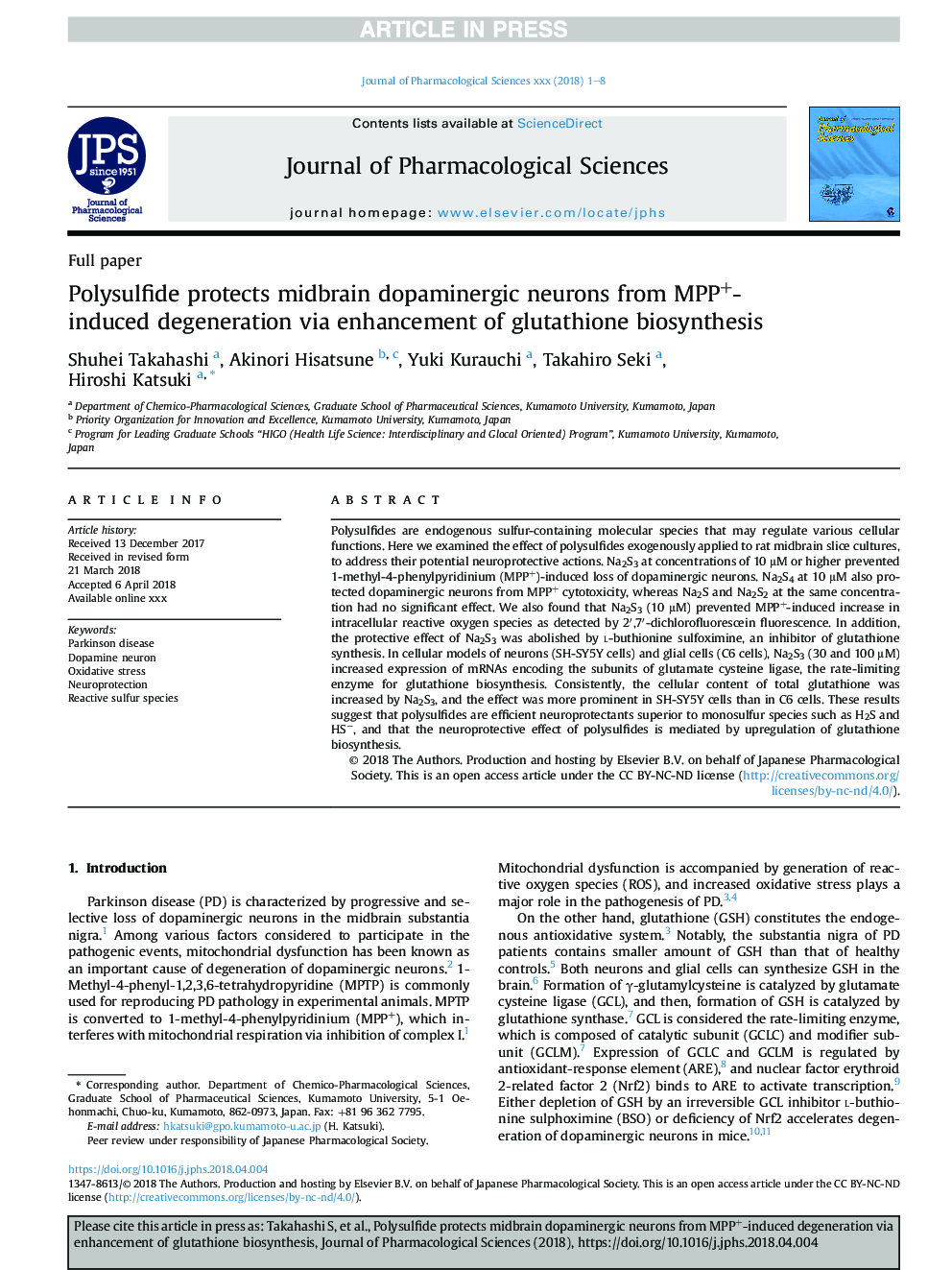| Article ID | Journal | Published Year | Pages | File Type |
|---|---|---|---|---|
| 8532780 | Journal of Pharmacological Sciences | 2018 | 8 Pages |
Abstract
Polysulfides are endogenous sulfur-containing molecular species that may regulate various cellular functions. Here we examined the effect of polysulfides exogenously applied to rat midbrain slice cultures, to address their potential neuroprotective actions. Na2S3 at concentrations of 10 μM or higher prevented 1-methyl-4-phenylpyridinium (MPP+)-induced loss of dopaminergic neurons. Na2S4 at 10 μM also protected dopaminergic neurons from MPP+ cytotoxicity, whereas Na2S and Na2S2 at the same concentration had no significant effect. We also found that Na2S3 (10 μM) prevented MPP+-induced increase in intracellular reactive oxygen species as detected by 2â²,7â²-dichlorofluorescein fluorescence. In addition, the protective effect of Na2S3 was abolished by l-buthionine sulfoximine, an inhibitor of glutathione synthesis. In cellular models of neurons (SH-SY5Y cells) and glial cells (C6 cells), Na2S3 (30 and 100 μM) increased expression of mRNAs encoding the subunits of glutamate cysteine ligase, the rate-limiting enzyme for glutathione biosynthesis. Consistently, the cellular content of total glutathione was increased by Na2S3, and the effect was more prominent in SH-SY5Y cells than in C6 cells. These results suggest that polysulfides are efficient neuroprotectants superior to monosulfur species such as H2S and HSâ, and that the neuroprotective effect of polysulfides is mediated by upregulation of glutathione biosynthesis.
Related Topics
Health Sciences
Pharmacology, Toxicology and Pharmaceutical Science
Pharmacology
Authors
Shuhei Takahashi, Akinori Hisatsune, Yuki Kurauchi, Takahiro Seki, Hiroshi Katsuki,
